Starting an E-Commerce Business From Scratch

What is an e-commerce business and how can you start one from scratch?
Starting an e-commerce business from scratch involves conducting buying and selling activities online through a website or digital platform.
Two common e-commerce business models are:
Business-to-Consumer (B2C): In this model, businesses sell products or services directly to individual consumers through their online stores. It’s the most familiar e-commerce model.
Business-to-Business (B2B): B2B e-commerce involves businesses selling products or services to other businesses through online platforms. This model facilitates wholesale transactions.
B2B e-commerce examples:
- Manufacturing
- Wholesale Distribution
- Software as a Service (SaaS)
- Financial Services
- Digital Marketing Agencies
- Construction and Building Materials
- Healthcare Services
B2C e-commerce examples:
- Consumer Electronics
- Grocery and Food Delivery
- Streaming Services
- Travel and Hospitality
- Health and Wellness Products
- Sporting Goods
What does “e-commerce” mean?
E-commerce is defined as the exchange of products and services over the internet. It’s a type of electronic commerce in which companies deal with clients over the internet. Entrepreneurs can effectively broaden their audience through e-commerce, as it eliminates local limitations.
Why start an e-commerce business in 2023?
Starting an e-commerce business in 2023 capitalizes on sector growth, lower overhead costs, and global reach through advanced digital tools.
Morgan Stanley reports E-commerce accounts for 22% of sales, $3.3 trillion, with a projected increase to $5.4 trillion by 2026.
You have the option of selling products online as a full-time career or a side hustle if you want to
- Generate passive income
- Ongoing growth of the e-commerce sector
- Diverse market opportunities
- Lower overhead costs
- Global reach and customer base
- Advanced e-commerce technology
- 24/7 convenience for consumers
- Access to sophisticated digital marketing tools
- Options like drop shipping and print-on-demand
- Personalization and customer data utilization
- Sustainability considerations for eco-conscious consumers
How GoPro developed from a side business into a worldwide recognized brand
In 2004, Nick Woodman founded GoPro as a side business, thereby revolutionizing adventure photography with the HERO camera. By fostering user-generated content and innovation, it rapidly grew into a global brand.
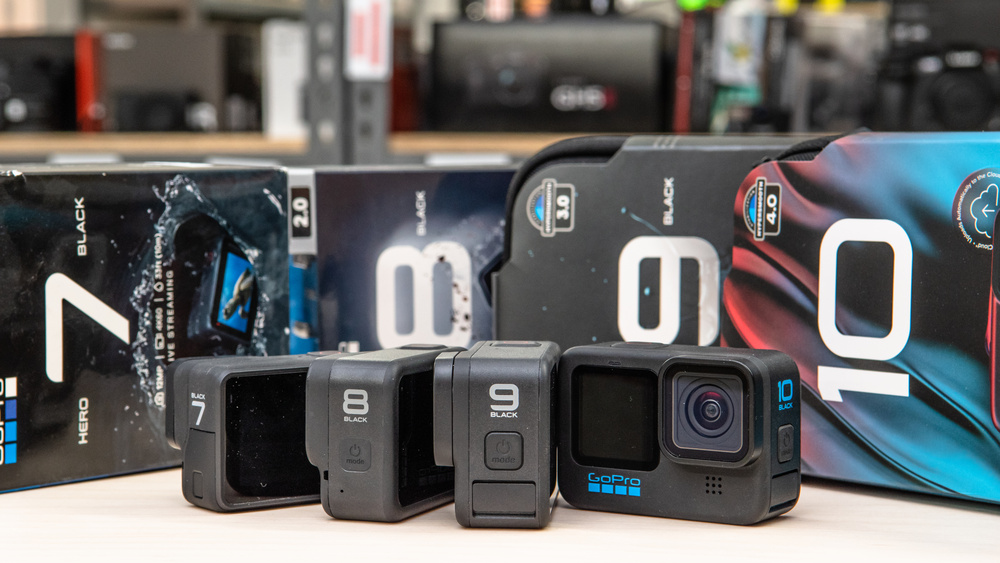
How To Launch An E-commerce Business From Scratch In 7 Steps
Are you thinking about turning your million-dollar idea into an online store? You might already be planning what to sell, who your customers will be, and how to attract them. An asset that adds genuine value to the market requires a long-term vision to be built.
Let’s examine seven fundamental steps to help set your e-commerce business up for success:
- Look up e-commerce business models.
- Begin researching internet niches
- Verify your target market and product ideas
- Register your brand name and online store
- Complete your online store business plan
- Create Your Online Store
- Getting Customers for Your Online Store
These seven steps lay the foundation for launching your e-commerce business. Continuously assess and adapt your strategies as customer and market needs evolve.
Step 1: Look up e-commerce business models
To determine what will sell, first, examine and validate your business concept thoroughly. Starting your research is an important first step. Don’t act on an intuitive feeling. Any online business expansion requires funding. Consider it as such.
Not every business model is successful for every client. Examples include software, the purchase of digital products, the sale of physical things, and service-based enterprises.
Before you choose what to sell online, make sure you understand the various business strategies thoroughly to inform your decision. It’s straightforward, yet it impacts your business structure.Let’s quickly review each of them.
Drop shipping
The simplest approach to launch an e-commerce store is with the drop shipping business model. Drop shippers work in collaboration with producers and fulfillment facilities to store, pack, and ship goods on their behalf. Due to this, business owners can operate their enterprises with minimal risk and initial outlay. Dropshipping suits new online business owners due to its simplicity and minimal capital requirements. You can manage your dropshipping business alongside your job, saving time for both.
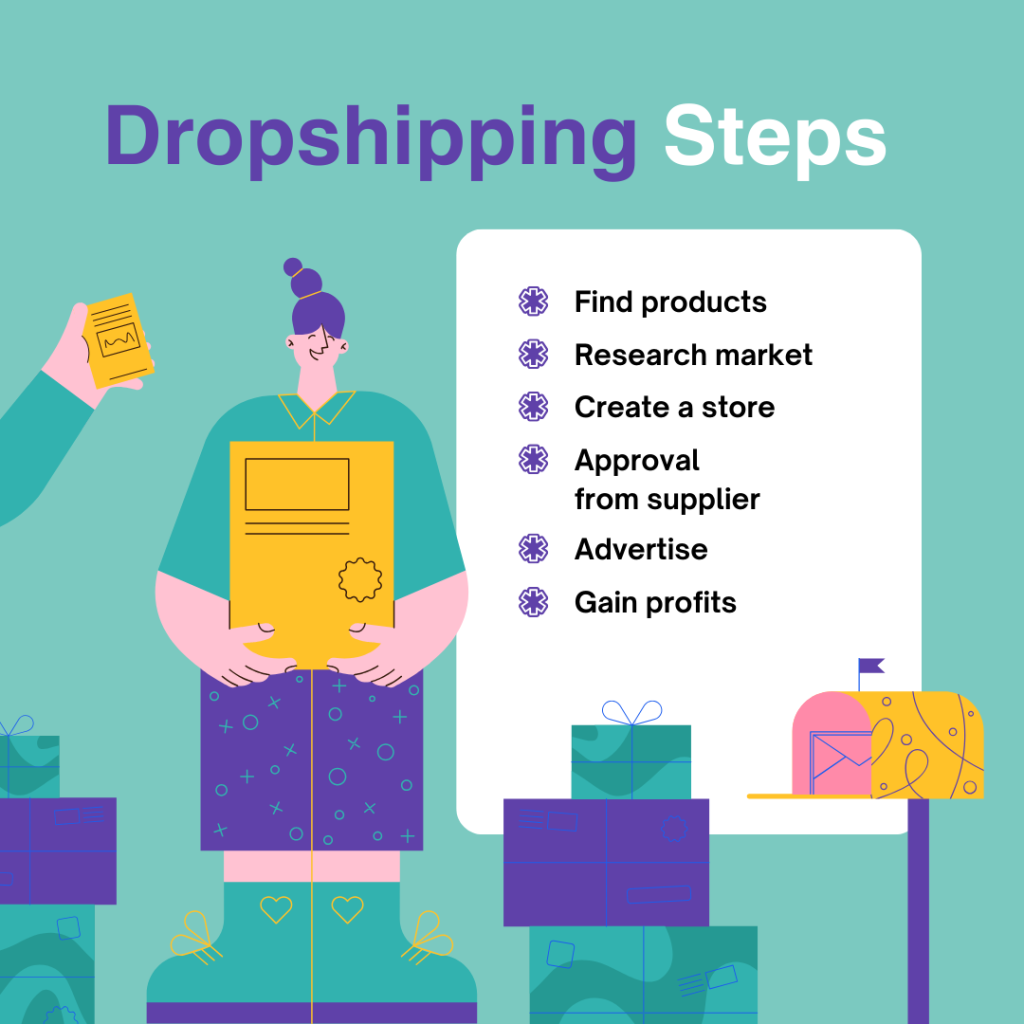
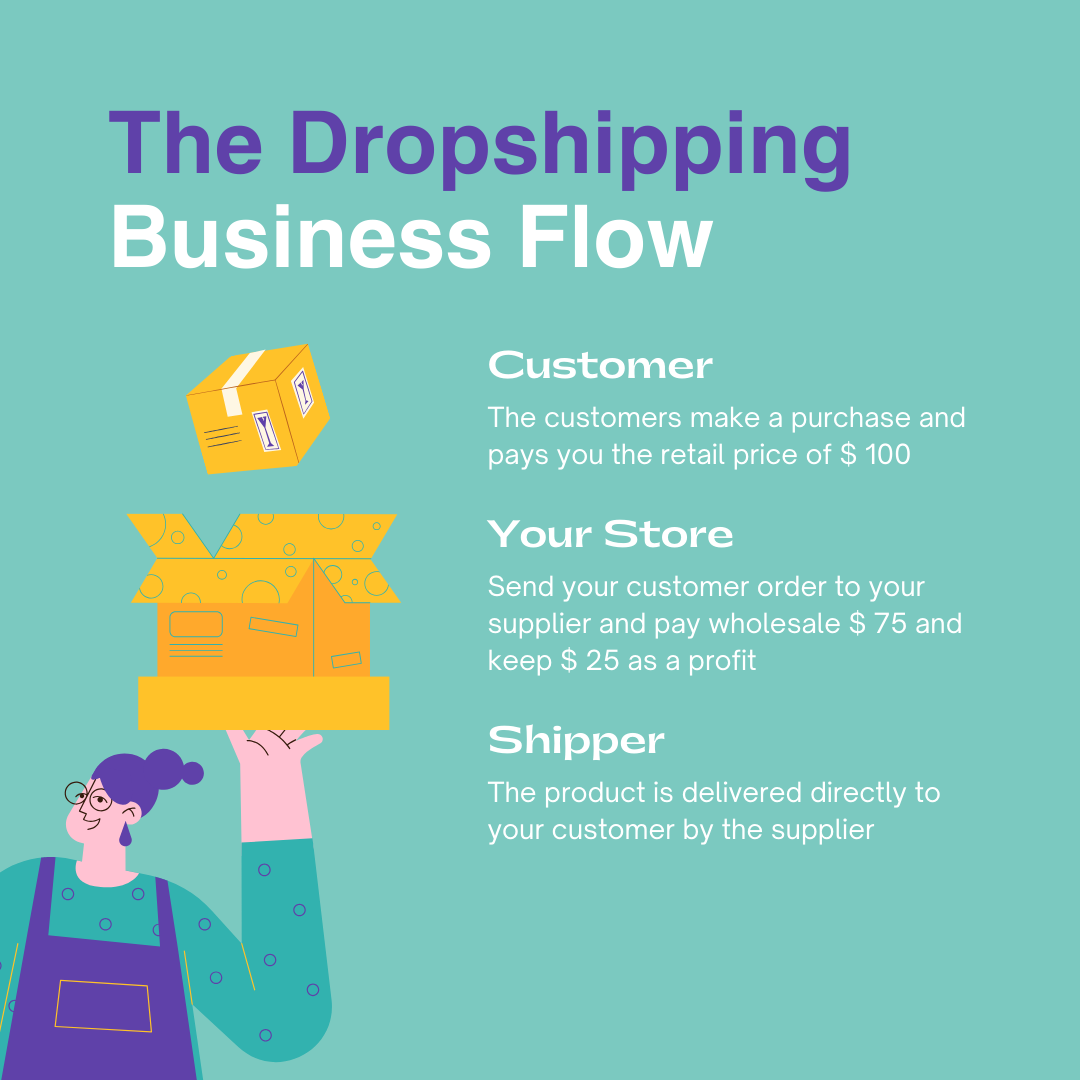
Choose dropshipping or print-on-demand for a low-cost, low-effort way to make money without altering products or spending significantly upfront. However, the viability of drop shipping remains debatable. You should have your items if you want to maintain a competitive edge.
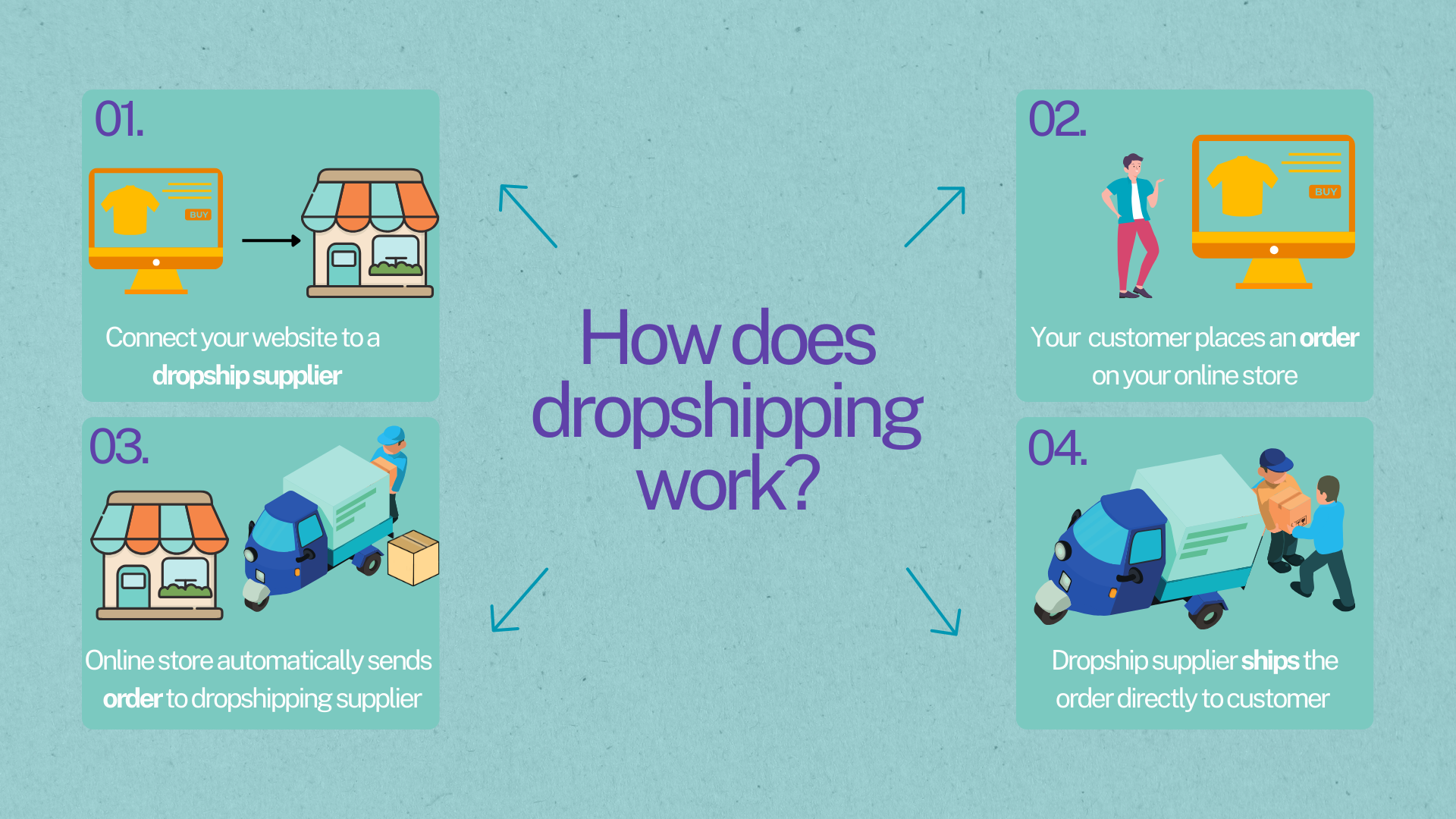
Wholesale Retail
The wholesale business model is similar to drop shipping, but there are a few key differences. Wholesalers buy products in bulk from manufacturers at a discount and then sell them online at retail prices.
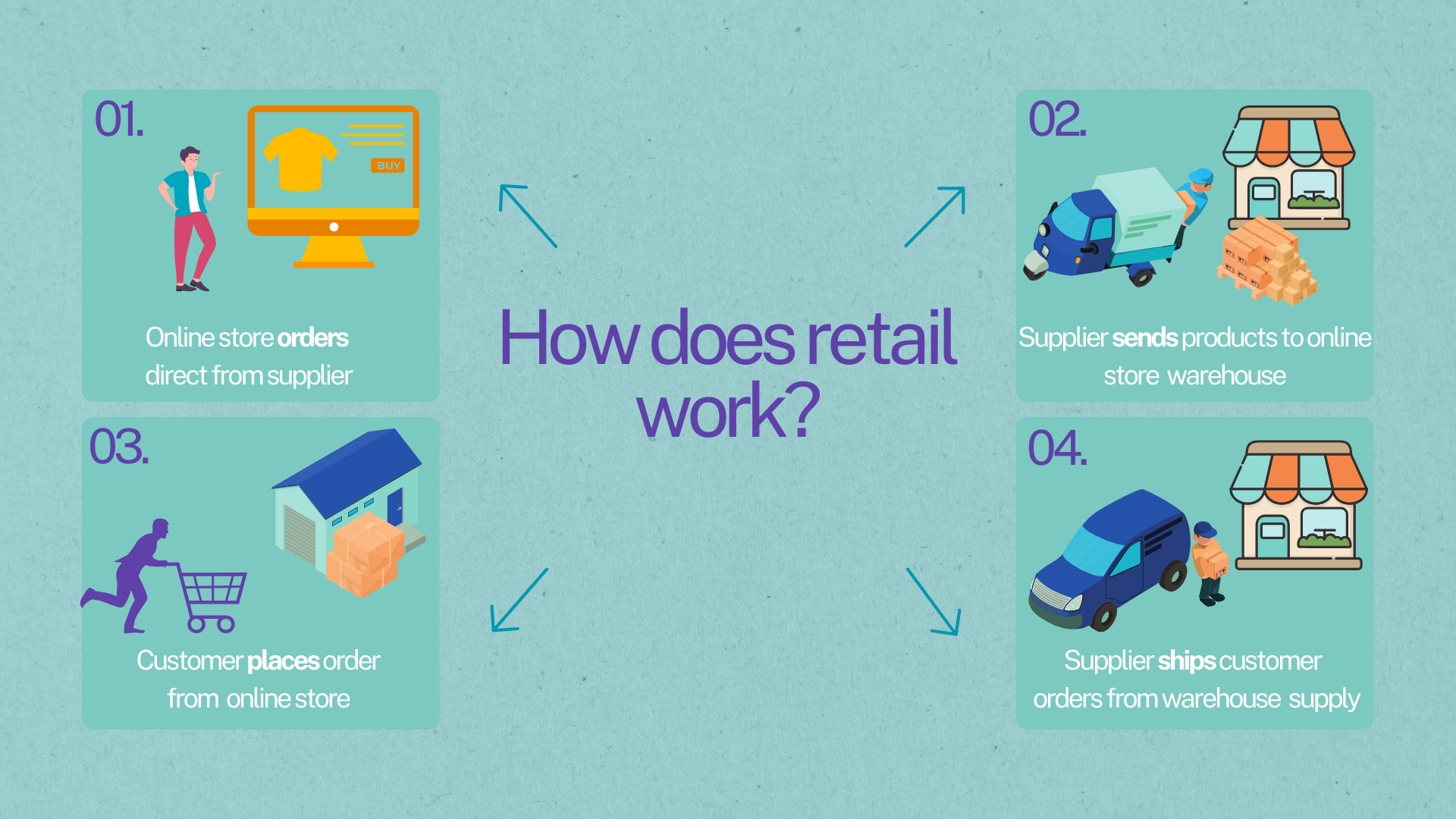
This e-commerce model is great for entrepreneurs seeking brand control. You manage production, packaging, and shipping, though it demands more time and effort than dropshipping.
Retail involves selling goods or services directly to consumers through physical stores, online platforms, or both. Retailers sell directly to consumers through stores or online, buying from wholesalers, setting prices, and offering products, marketing, and services.
Private/White Label
Private labeling typically involves having things made especially for your company. This e-commerce strategy is appropriate for business owners looking to build their brands and maintain product quality.
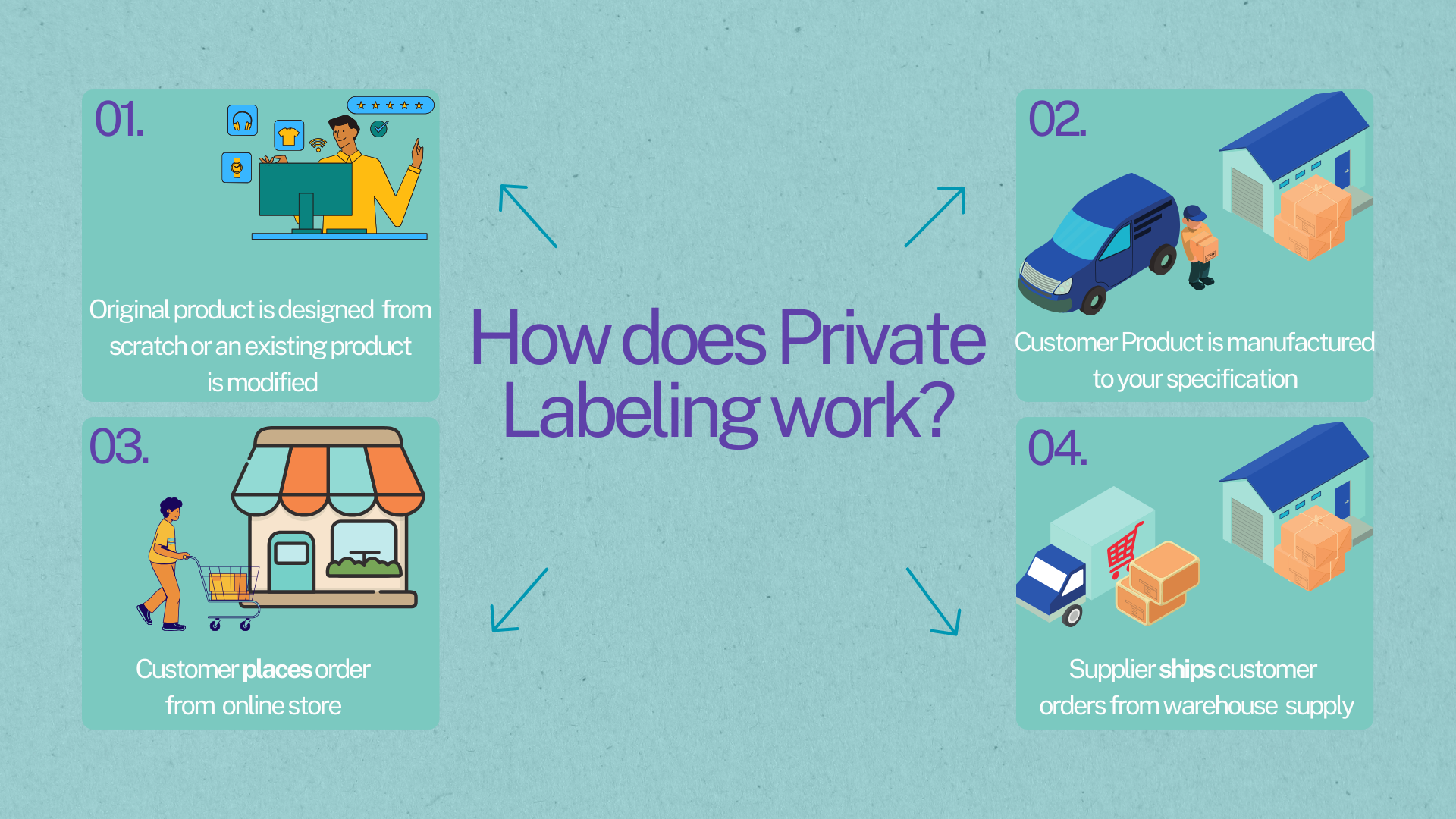
Private label products are made by one company but sold under another’s brand and label, distinct from dropshipping or resale. These products are often produced in partnership with manufacturers, allowing retailers or businesses to offer exclusive products with their branding. Retailers or businesses can achieve higher profit margins, brand exclusivity, and reduced marketing and research costs with private-label products.
Resources On E-commerce Business Models
Resources on e-commerce business models offer insights into online selling strategies, aiding entrepreneurs in selecting the right model for their ventures.
I strongly recommend taking your time to familiarize yourself with various business concepts and mentally contrasting them. Select the option that best complements your resources and marketing strengths. Think about your selling location as well.
Do you want to sell on Amazon or open your online store on Shopify? Of course, you can combine the two, but marketing will be distinct. You can even stop selling your goods and work as an affiliate marketer instead. Before starting, you should research successful business models.
Step 2: Begin researching internet niches
Choosing your niche is the most important stage in launching your online business. Find successful companies that are already operating in this sector to begin the process. Make sure the site is competitive because a lack of it often indicates that there is no market.
However, avoid choosing a highly competitive niche and avoid any that is already dominated by well-known companies. If you’re having problems, narrow down your goals more; the more particular you are, the less competition you’ll likely encounter.
Narrowing your focus has the advantage of creating similar yet distinct “shoulder” niches from what you do. You can collaborate with entrepreneurs in those specialized markets to cross-promote, obtain an affiliate, and grow your customer base.
Using Data From Google
Using data from Google includes gathering, analyzing, and interpreting information attained from Google’s various services and platforms.
Keyword Planner– Keyword Planner is a tool provided by Google within its Google Ads platform. It is primarily designed to help advertisers and website owners conduct keyword research and plan their advertising campaigns effectively. It also provides an idea of how many people are searching for things linked to what you want to sell.
Ad Campaign Optimization– Advertisers examine their advertising performance, utilizing Google advertising data to assess click-through and conversion rates, making adjustments to improve ROI.
Resources On Niche Research
Google Trends: Check for trending topics.
Amazon and eBay: Explore best-sellers.
Social Media: Look for trends and hashtags.
Reddit: Check niche-related subreddits.
Keyword Tools: Use for niche keyword research.
Competitor Research: Study successful stores.
Industry Blogs/Reports: Find market insights.
Surveys: Get feedback from potential customers.
Online Forums: Engage with niche communities.
Google Alerts: Monitor niche news.
Trade Shows: Attend industry events.
Niche Research Tools: Use specialized tools.
Google Analytics: Analyze user behavior.
Step 3: Verify your target market and product ideas
Now that you’ve chosen your specialty and business strategy, you might be tempted to start hunting for products to sell.
Consider personas first before coming up with product concepts. You can’t expect people to buy your products if you don’t know who you’re marketing to.
Who are you? What does the store represent? Who are your ideal customers? The route toward a consistent brand image must begin with your brand name. An organic seed company that started selling conventional fertilizer wouldn’t last very long.
Additionally, consider securing the second sale. While acquiring new clients can be challenging, increasing their lifetime value is essential once onboard. So think about your target market and try to come up with upsells, cross-sells, or perhaps a subscription model.
Using Facebook for Market Research
Luckily, Facebook makes it comparatively easy for us to get your target audience online. Be specific about how many people you can target. You can drill down to obtain really precise numbers and comprehensive demographics.
- Create a Facebook Business Page
- Identify Your Target Audience
- Join Relevant Facebook Groups
- Use Facebook Audience Insights
- Run Surveys and Polls
- Analyze Competitor Pages
- Monitor Facebook Ad Campaigns
- Engage with Your Audience
- Use Facebook Pixel for Website Traffic Analysis
- Test Facebook Ads
Sourcing Products
If you decide to go the actual product route, you must look into manufacturers and identify a trustworthy provider. Since Alibaba is the biggest online market in the world for sourcing goods, I suggest it for this. You can discover various products on Alibaba; if you have a product idea, someone there likely offers it. Check the client feedback and shipment times of potential manufacturers and suppliers.
But before making a purchase, make sure to carefully inspect the product. Test and use the product personally when opting for dropshipping to identify issues and craft customer service scripts. The first stage in validating your idea is to ascertain its practicality.
Can you suppliers that meet your pricing? Do they have a fallback strategy in place in the event of an emergency?
Step 4: Register your brand name and online store
When starting your road to launch an e-commerce store, registering your brand name and online store is a crucial step. Secure your unique brand identity and establish a thriving digital storefront for your products or services while starting an e-commerce business from scratch. By doing this, you build a robust online presence and legal protection, paving the path to success in e-commerce’s competitive world. In today’s digital commerce landscape, a fundamental technique that matters when starting an e-commerce business from scratch is ensuring your brand’s credibility and visibility through proper registration.
Register Your Business
Pick a unique business name for your brand and register your company. Register your business by choosing a legal structure, fulfilling local/state requirements, obtaining an EIN, and ensuring website compliance with laws.
Choose Your Store’s Name
Select a distinct brand name that represents your niche. Consistency in naming your website and official company name, while not mandatory, provides advantages worth considering.
Get Your Business License
Secure e-commerce licenses: define your structure, choose a unique name, research local/state rules, obtain permits, register an EIN, and comply with industry-specific regulations.
Get Your Employer Identification Number (EIN)
The IRS can provide you with an Employer Identification Number (EIN). For tax and operational purposes, consider this step when planning to hire employees or open a business bank account. it’s a unique number that categorizes your business and supports you in filing important paperwork.
Apply for Business Licenses and Permits
Functioning an online store does not exclude you from requiring certain business licenses and permits. Check with your local and state authorities to determine if you need specific licenses or permits to operate an e-commerce business. Get any required licenses.
Find the Right Vendors
Discover manufacturers or suppliers who can provide the goods or services your e-commerce platform needs reliably. It’s a critical step in ensuring the quality, pricing, and consistency of your products. Evaluate their track record, pricing policy, and ability to meet your specific business needs when assessing potential partners.
Shop around, even with your e-commerce software (“shopping cart”), until you locate a provider you wish to work with long-term. Think scalable from the beginning.
Logo Creation
Don’t worry about it too much, but do make sure that it is not in use by another company in your niche. It involves designing a unique visual symbol or mark that represents your online store’s brand identity. With the help of this logo, buyers can learn about the character, principles, and products of your company.
Any e-commerce company needs brand individuality. From your website design to the technique you communicate with customers, your brand identity should be echoed in everything.
Get Visual
Think thoughtfully about your brand’s color scheme, imagery, and font choices. If your budget allows, consider enlisting a marketing agency to craft a design brief for your business. Alternatively, create one yourself while maintaining consistency and seeking marketing advice to strengthen your brand identity.
Step 5: Complete your online store business plan
At this point, when starting an e-commerce business from scratch, you should have a clear vision of your business, including your product specialization, target market, and brand name. It involves completing a detailed document that sets forth the strategic direction and operational specifics of your e-commerce business. Now, take a moment to document your business plan for starting an e-commerce business from scratch, including the startup budget, loan requirements, and monthly expenses.
Financial Management
The long-term success of an e-commerce business depends on having excellent financial management. Determine your break-even point in terms of both unit sales and time in months.
The job of a CEO is to take resources and make a profit. However, it saddens me to see how few business owners plan their revenue and expenses. You won’t succeed if you can’t calculate your profit margin.
You should work out details regarding your employees, product sourcing, logistics, and marketing budget throughout the business planning process. Make certain you are informed of all the financial options you have. And learn the basics of accounting and bookkeeping, even if you hire someone else to manage your books.
Inventory Management & Fulfillment
It refers to the processes and strategies involved in efficiently handling your e-commerce business’s product stock. This encompasses inventory tracking, stock level optimization, order processing, shipping, and returns management. Meeting customer demands, reducing costs, and ensuring seamless e-commerce operations in 2023 and beyond require effective inventory management and fulfillment. Many business owners steer clear of online physical goods transactions. The good news is that you don’t have to store products in your own space. Fulfillment centers can manage your inventory on your behalf.
Companies store your inventory for you while they utilize their warehouse space to ship your products. Once you have a lot of assets occupied in your inventory, you’ll need insurance.
Inventory management software
It will help keep your business organized, particularly when managing extensive inventories, although I wouldn’t advise this approach for newcomers. When starting, prioritize simplicity. Begin by ordering directly from the manufacturer and arranging for direct delivery to the fulfillment center.
Before constructing your store, it’s essential to resolve logistics issues. Even if you’re engaged in drop shipping, it’s imperative to have a clear understanding of your inventory sources.
The foundation of a successful e-commerce business hinges on a well-structured strategy, so ensure you have that outlined as well.
Step 6: Create Your Online Store
Creating your online store is a pivotal step in starting an e-commerce business from scratch. After officially becoming an e-commerce business owner, the next task is to register your domain name and any relevant redirect URLs. Then, bring your website design decisions from the previous step to life as you construct your online storefront when starting an e-commerce business from scratch.
Managing Your E-Commerce Website
Managing an e-commerce website involves multiple components. We’ll simplify them for you. Make sure the design you choose is compatible with your e-commerce software. Selecting e-commerce software can be challenging due to the variety of shopping cart platforms, including both free and premium options. Consider factors like loading speed, available features, payment gateway compatibility, alignment with your business, web development skills, SEO-friendliness, and more.
Research and Comparison
To assist you in making the best choice, we’re compiling reviews and comparisons. After conducting extensive research, we’ve identified the top options listed below. When you’ve settled on an e-commerce solution, it’s wise to avoid hiring a “CRO Expert” or a costly development company. Instead, opt for a theme that suits your needs. Depending on your cart’s features, you may invest around $100 in a high-quality template.
Choosing the Right Theme
For platforms like BigCommerce, Shopify, and WooCommerce, there’s a wide array of themes available. One standout choice is the Booster Theme, particularly if you’re aiming to enhance your site’s conversion rates. This theme comes with built-in marketing tools that could save you $281 monthly on additional apps. Its exceptional qualities include integrated apps, conversion-oriented designs, and impressive loading speeds.
Configure Your Online Store
Creating your online store involves more than just adding products and content; it also entails configuring your email marketing and automation systems. It’s crucial to establish these elements before you start attracting traffic to your website. Email marketing plays a pivotal role in boosting conversions. Ensure that you have configured features like coupons, thank-you emails, and upsells to effectively transform visitors into customers. Additionally, don’t forget to consider your customer support strategy as an integral part of your e-commerce setup.
Why Choose Shopify for Your E-commerce Business?
Shopify is a clear winner if you lack the resources to hire a web developer and have limited technical experience. It is a comprehensive platform with several stylish templates that are plug-and-play, feature-rich, and expandable.
Performance and dependability are the cherry on top of the entire flexibility and usability. Benefits of Shopify:
- Usability: The most user-friendly platform is Shopify.
- Design: It has a ton of attractive themes.
- Performance: no-stress uptime and speed.
- Support: Shopify offers many authorized partners who can assist you.
- Apps: The absolute greatest apps for selling are those on Shopify.
- Value: Pricing strategies created to grow with you.
- Drop shipping: Direct shipment from suppliers to customers, no inventory storage.
Step 7: Getting Customers for Your Online Store
You require a solid marketing plan. While choosing your shopping cart, I emphasized considering search engine-friendly features; not all carts are equal in this regard.
E-commerce SEO
The era of keyword stuffing from the early 2000s is long gone, but SEO remains crucial. Remember to incorporate keywords and search terms thoughtfully on every page, in URLs, and within your ad campaigns. Consider strategies for driving traffic to your website.
Top e-commerce websites prioritize substantial investments in online marketing. If budget constraints exist, dedication and effort become paramount. Stay informed by subscribing to marketing newsletters or tuning into digital marketing podcasts for valuable insights and industry trends.
Facebook and Instagram Marketing
Both Facebook and Instagram marketing can be powerful tools for businesses to build brand awareness, engage with their audience, drive website traffic, and generate leads or sales. A successful strategy combines compelling content, precise targeting, and ongoing analysis to optimize campaigns for optimal results.
Facebook is a massive global social media platform with diverse users. It supports various ad formats, including images, videos, and carousels, placed in newsfeeds, sidebars, or the Marketplace. Advertisers benefit from precise targeting based on demographics, interests, and behaviors, aligning with campaign goals. Facebook also provides powerful analytics for data-driven decision-making and optimization.
Instagram is a visually stimulating website that appeals to younger demographics. It offers various ad formats that seamlessly blend into user feeds and stories, emphasizing high-quality visual content. Businesses leverage hashtags for discoverability and often engage in influencer marketing. Instagram provides insights into post performance and follower demographics.
Your goal is to sell products, not just increase traffic. To achieve this, it’s essential to think beyond your website and explore avenues for expansion.
Email Marketing
Irrespective of your chosen sales strategy, the initial step is to establish your email marketing automation. You can achieve this by adding an opt-in freebie, launching a social media campaign, or organizing a giveaway.
My go-to marketing strategy to increase traffic and subscribers is to run a contest. Contest offer the added advantage of enhancing your brand’s visibility and product exposure. By growing your email list through giveaways, you acquire a valuable pool of potential customers, simplifying the sales process significantly.
Supplying customers with discounts and engaging content via email serves to maintain brand awareness, drive sales, and cultivate trustworthiness. Ensure your emails remain captivating by seeking customer feedback, encouraging reviews, and sharing new blog posts. Strive for a balanced approach, offering valuable content alongside promotional offers. Address customer service and product quality concerns promptly while prioritizing relationship building. Remember, each sales interaction isn’t just about the initial sale; it’s an opportunity to nurture the next one consistently.
Analyzing Website Performance
Examine the flow of traffic on your website and assess its alignment with your target audience. Identify any potential customer drop-off points. If you’re driving traffic but not generating sales, address these issues by carefully optimizing each page and reviewing product listings. Google Analytics can assist in this analysis. There are available tools to monitor and optimize every stage of your sales process for improved results.
Consider exploring partner and affiliate marketing as strategies to enhance your brand’s visibility. This involves providing affiliate marketing opportunities and forming partnerships with businesses in related niches.
Ready To Start Your E-commerce Business?
Why wait? With numerous thriving e-commerce ventures, it’s the perfect time to dream big and launch your own. The online world offers endless possibilities for selling just about anything!
If this post has addressed your inquiries about commencing an e-commerce store, please consider sharing it. I’ve dedicated years to assisting business owners like you. Running a prosperous e-commerce website doesn’t have to be arduous or costly.
With dedication and time, you can kickstart a profitable online store for just a few hundred dollars per month.
Your success matters. Explore the resources above to save time and make informed decisions in e-commerce. I hope the insights were useful.



